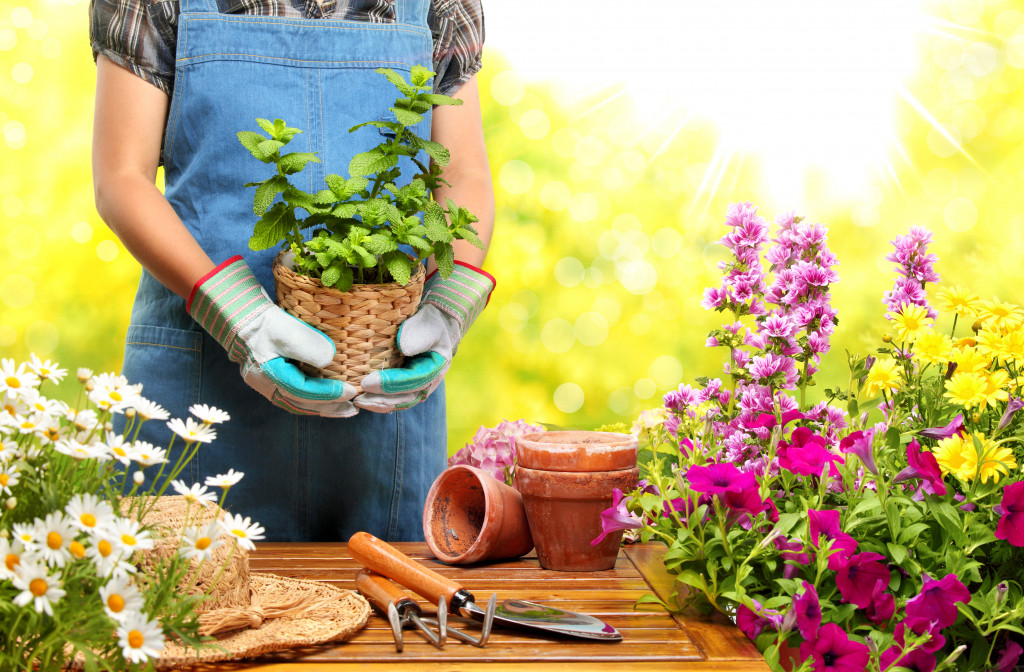Many people would love to have a garden in their backyard, but they either don’t have the time, effort, or knowledge to do so. If you’re one of those people, this guide is for you. You can easily build a garden that is both practical and functional without having to put in too much time or effort. Here are some tips to get you started:
1. Start small.
Don’t try to build an expansive garden all at once. Start with a small plot of land, and gradually expand as you have the time and resources. This will make the process less daunting, and you’ll be more likely to stick with it in the long run. Many people give up on their gardening dreams because they try to do too much at once.
For example, you could start by planting a few vegetables in raised beds. Then, once you’re comfortable with that, you could add some fruit trees or a small herb garden. Don’t bite off more than you can chew.
2. Consider your climate.
Different plants thrive in different climates, so choosing plants that will do well in the area where you live is essential. If you’re not sure what plants are best for your climate, ask a local nursery or gardening center. They’ll be able to give you some good recommendations.
Some plants are more tolerant of different climates than others. For example, if you live in an area with hot summers and cold winters, you could grow plants that are native to the desert. These plants are used to extreme temperatures, so they would do well in your climate.
3. Set aside some storage space.
Most gardens require storage space for tools, equipment, and supplies. If you don’t have a lot of space, you can still store things in a shed, garage, or basement. Make sure you have enough space to move around and access everything you need.
If you don’t already have a garden shed, you can start with 8×12 shed plans that are readily available online. This will give you plenty of space to store all of your supplies. You can build the shed yourself or hire someone to do it for you. You can also buy a pre-made shed, but they can be expensive. If you’re on a budget, it’s better to build your own.

4. Get a soil test.
The type of soil in your garden will dictate what kind of plants will grow best. A soil test will tell you the pH level of your soil, as well as the nutrient content. This information is essential because it will help you choose plants that work well in your soil.
You can get a soil test kit at a local nursery or gardening store. Once you have your soil test results, you can research what plants will do well in your soil. Some plants are more tolerant of different soil types than others. For example, if you have acidic soil, you could grow blueberries. But if you have alkaline soil, you could grow potatoes.
5. Plan for maintenance.
All gardens require maintenance, so it’s essential to plan for them in advance. You’ll need to water your plants, weed your garden, and fertilize regularly. Depending on the type of plants you’re growing, you may also need to prune them or protect them from pests.
The best way to plan for maintenance is to choose easy to care for plants. For example, if you’re not good at watering plants, you could select drought-tolerant plants. Or, if you don’t like weeding, you could choose plants that don’t require much maintenance.
6. Use mulch
Mulch is a material (usually organic) that you spread around your plants to help retain moisture and suppress weeds. It’s an important part of any garden, and it can make a big difference in the health of your plants. Many inexperienced gardeners don’t use mulch, and as a result, their plants suffer.
You can use many different kinds of mulch, such as leaves, wood chips, and straws. You can usually find mulch for sale at local nurseries or gardening stores. It’s essential to choose the right type of mulch for your plants. For example, if you want to grow vegetables, you want to use a different type of mulch than if you’re growing flowers.
Building a garden can be a fun and rewarding experience. But it’s important to do your research before you get started. By following the tips in this article, you’ll be well on your way to creating a beautiful and functional garden that you can enjoy for years to come.




